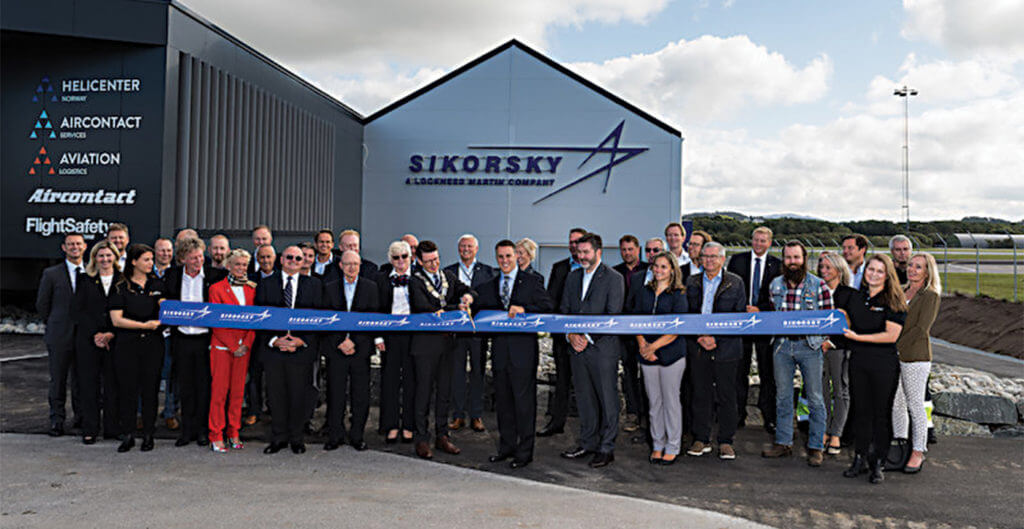Market leadership is not just about what happens in the spotlight, when the entire world is watching and every second of a performance is scrutinized, dissected and evaluated.
It’s also about the hidden moments only a few people see–the hundreds of small, unassuming steps that might go unnoticed for years but produce meaningful progress in the long run.
 Sikorsky, a Lockheed Martin Company, has a long history of both kinds of leadership, but its focus of late has been on the second kind.
Sikorsky, a Lockheed Martin Company, has a long history of both kinds of leadership, but its focus of late has been on the second kind.
The elite, respected manufacturer has been quietly improving its aftermarket support for commercial helicopters, and a series of small, unassuming steps are yielding dramatic results.
“We want to be first in customer support,” said Simon Gharibian, director of fleet management, supportability and training for Sikorsky.
“We actually see efficient sustainment and customer support as a big safety driver. In our minds, a well-supported aircraft is a safer aircraft.”
A key part of improving customer support has been reducing aircraft on ground (AOG) turnaround times, with the goal of no more than 24 hours per AOG event at the company’s Customer Care Center in Trumbull, Connecticut.
Sikorsky exceeded that target in 2017, with some months averaging as little as 16-hour turnaround times.
That builds on the remarkable success of the previous year, which saw the company reduce AOG turnaround times by 66 percent, and the total volume of AOG events by 72 percent.
“Keeping the aircraft up and flying was our stated priority,” said Gharibian. “We see that as a way of signaling to the customer base that we support them even in difficult market times.
 “And the belief is that as the market improves and they’re making choices of what the next aircraft to purchase will be, they’ll remember the excellent support that we’ve given them even when the market is down.”
“And the belief is that as the market improves and they’re making choices of what the next aircraft to purchase will be, they’ll remember the excellent support that we’ve given them even when the market is down.”
He noted helicopters are essentially capital equipment for operators, and they only make money when they’re flying.
“We want to make sure that our customers are being profitable,” said Gharibian. “Keeping their aircraft up in the air so that they’re producing revenue is very important.”
Adding Forward Stocking Locations (FSLs) at strategic sites has been a major reason for Sikorsky’s success, with parts inventories in multiple facilities rather than its main hub in Atlanta.
Since 2016, Sikorsky has launched FSLs in Aberdeen, Scotland; Rio de Janiero, Brazil; Brisbane, Australia; and Stavanger, Norway.
“We’ve become almost as efficient as we can with a centralized hub,” said Gharibian. “Now, the next step change is getting parts closer to the customers.”
Sikorsky is also seeing improvements in AOG turnarounds, thanks to inventory changes based on forecasting that leverages massive amounts of aircraft data from customers.
 “If you’re changing a forecast on a part that has a 300-day manufacturing lead time, you’re not going to see that improvement hit until those parts start showing up on your shelves,” said Gharibian.
“If you’re changing a forecast on a part that has a 300-day manufacturing lead time, you’re not going to see that improvement hit until those parts start showing up on your shelves,” said Gharibian.
“So there was a little bit of a delay from the moment we started really focusing on improving our forecasting capability to when those parts started to manifest themselves in our inventory.”
Sikorsky’s drive to improve customer support is a cohesive strategy that connects several digital tools in a single system to streamline the support process.
“Most of the individual tools have been in existence for a long time,” said Gharibian. “Some of them have been recently updated … but really, the power behind all of this is connecting them together.”
Sikorsky recently updated its Helotrac maintenance management system, introduced next-generation interactive technical manuals, and launched a new customer portal at Sikorsky360.com that connects existing data systems.
Another important tool for pilots is the iFly Sikorsky Performance app, an electronic flight bag suite for Apple devices. Sikorsky will be launching a new version of iFly at Heli-Expo 2018, with a completely redesigned user interface and the ability to access web-based meteorological aviation reports (METARs).
“We’re continually working with our customers to identify new and innovative ways to expand the use of the tool,” said Gharibian.
 Sikorsky has seen a positive response to its customer support initiatives, but Gharibian acknowledged that customers want more.
Sikorsky has seen a positive response to its customer support initiatives, but Gharibian acknowledged that customers want more.
“They’re happy with the changes that we’ve made,” he said. “They’ve seen marked improvement, but as customers they always want more from us.”
Meeting and exceeding those expectations will be a major focus for Sikorsky in the year ahead.
“Our focus is keeping aircraft availability high; shortening the time it takes from identifying an issue with an aircraft to getting it back up and flying; and improving the safety of the operation by making sure the correct information and parts are available to operators at all times,” Gharibian. “When our customers’ valuable minutes are at stake, we want them to know that Sikorsky is there to keep them flying.”
That’s what it takes to be a leader, and Sikorsky is moving earnestly in the right direction, taking small, unassuming steps that may eventually register as a giant leap forward.









